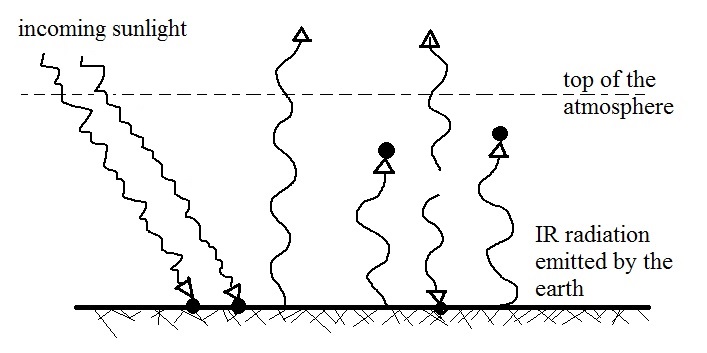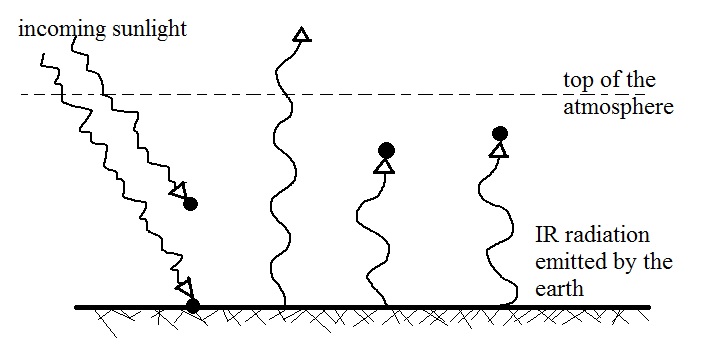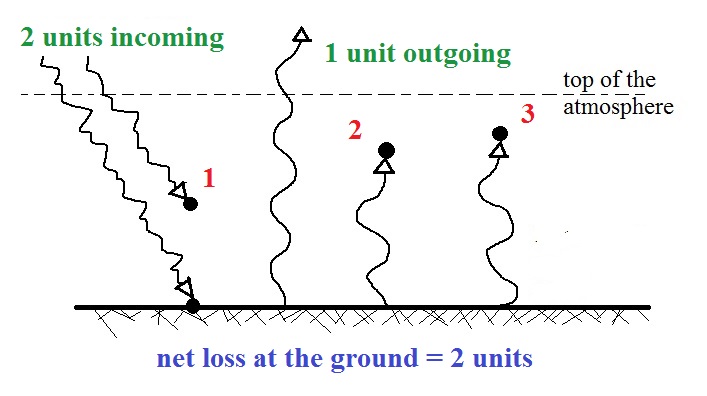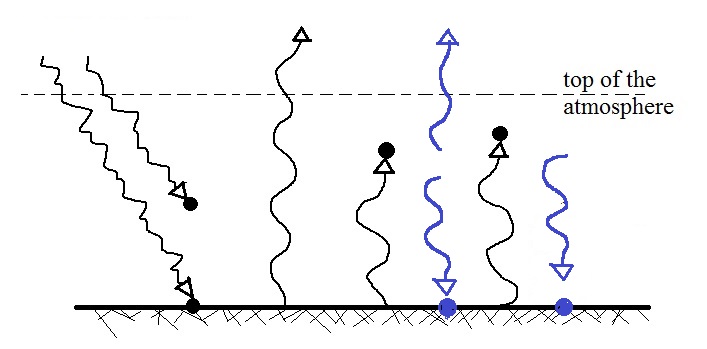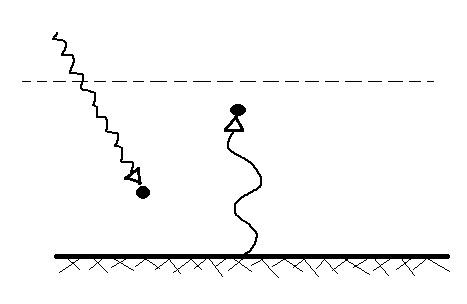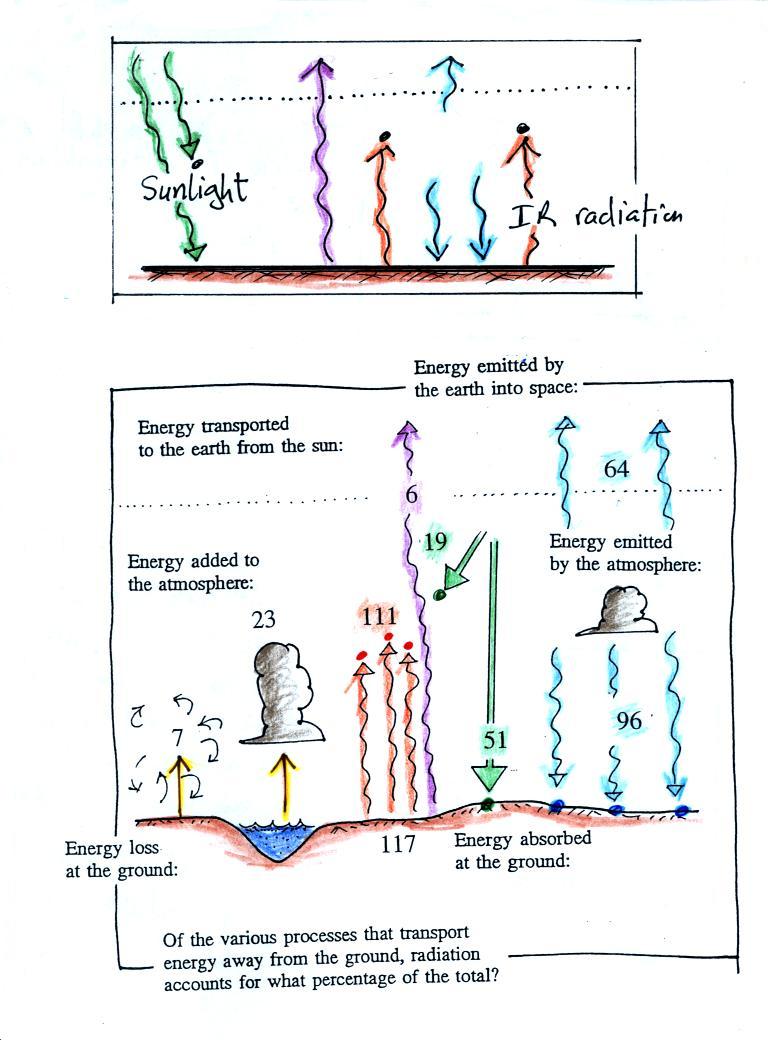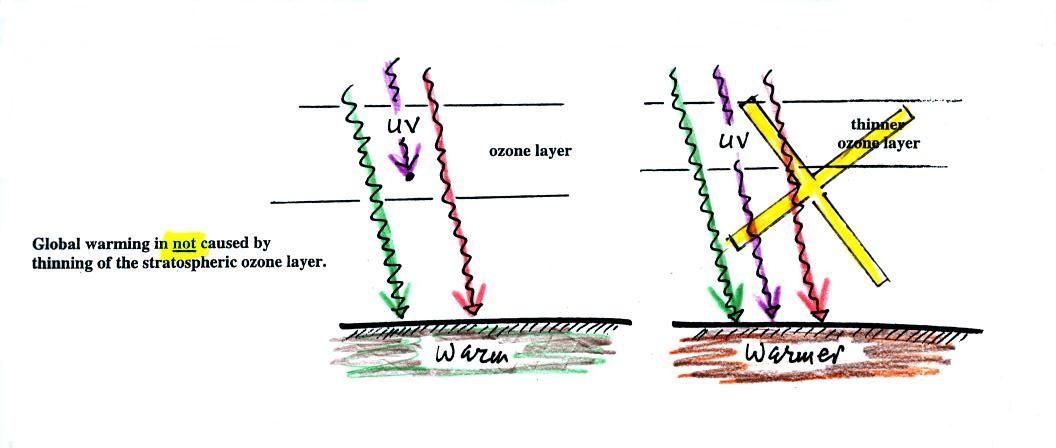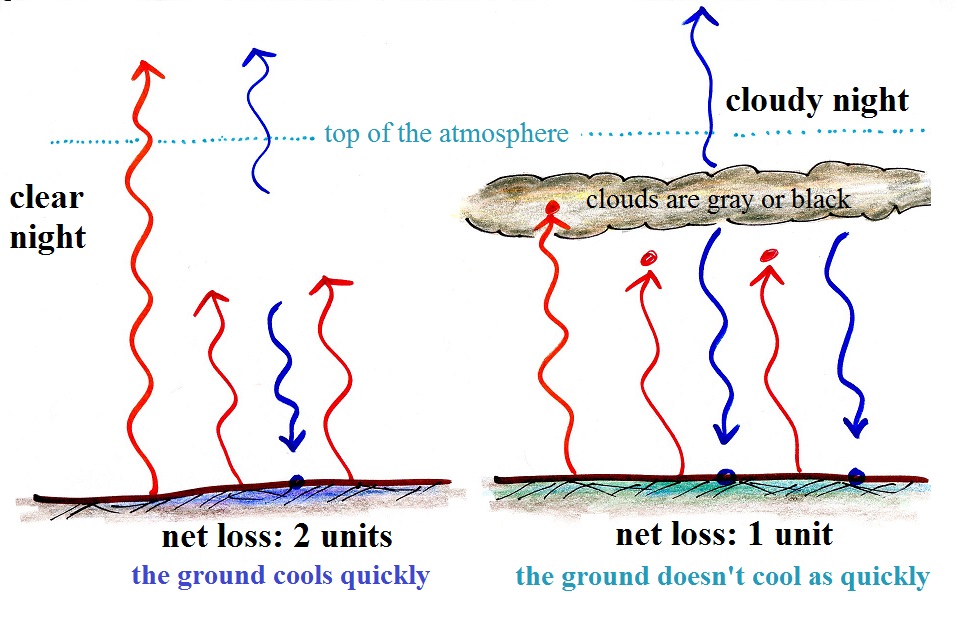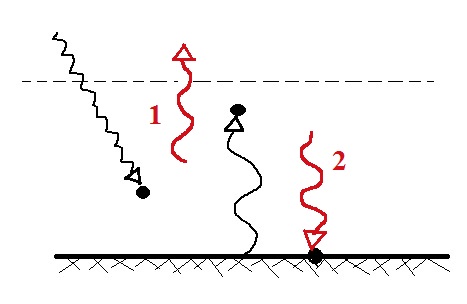The figure (p. 72b in the photocopied Class Notes) on the left
shows energy balance on the earth without an atmosphere (or
with an atmosphere that doesn't contain greenhouse
gases). The ground achieves energy balance by emitting
only 2 units of energy to balance out what it is getting from
the sun. The ground wouldn't need to be very warm to do
this, only 0 F.
If you add an atmosphere and greenhouse gases, the
atmosphere will begin to absorb some of the outgoing IR
radiation. The atmosphere will also begin to emit IR
radiation, upward into space and downward toward the
ground. After a period of adjustment you end up with a
new energy balance. The ground is warmer and is now
emitting 3 units of energy even though it is only getting 2
units from the sun. It can do this because it gets a
unit of energy from the atmosphere. This is what I refer
to as the beneficial greenhouse effect. It makes the
earth more habitable by raising the average surface
temperature to 60 F.
In the right figure the concentration of greenhouse gases
has increased even more (due to human activities). The
earth might find a new energy balance. In this case the
ground would be warmer and could be emitting 4 units of
energy, but still only getting 2 units from the sun.
With more greenhouse gases, the atmosphere is now able to
absorb 3 units of the IR emitted by the ground. The
atmosphere sends 2 back to the ground and 1 up into
space. A new balance is achieved but the earth's surface
is warmer. How much warmer? That's the big
question. An even bigger question is what effects that
warming will have.
Don't worry about all the details in this figure, just notice
the trend. As greenhouse gas concentrations increase,
the earth warms.

